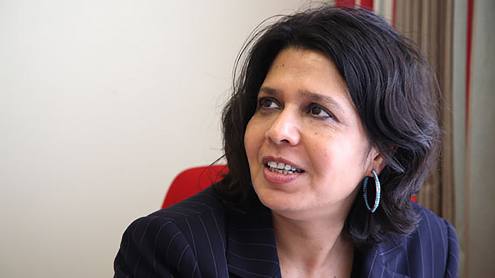Cryptocurrencies are as divisive as ever. Supporters disagree on whether crypto should remain true to its anti-establishment roots or integrate into the mainstream financial system, while the financial authorities are unsure if crypto should be extinguished, ignored or harnessed for good.
Regardless of how that plays out, cryptocurrencies are set to leave a fine legacy. Before crypto, the infrastructure of the financial system, the plumbing that is so essential and usually ignored, was a niche area of study. While that suited the incumbents and the financial authorities, it also meant a highly inefficient payment system and significant rent extraction.
Crypto threatens that cosy little world. The competition from crypto has forced the public and private sector incumbents to address the system’s deficiencies. Brazil’s PIX is an excellent example of what the financial authorities can accomplish when sufficiently motivated.
At their essence, cryptocurrencies are a political movement. Satoshi Nakamoto’s original bitcoin paper argues that technology can solve the problems of the existing financial system, and the adoption of bitcoin and other cryptocurrencies has been driven by techno-libertarians who see it as the solution to a corrupt and inefficient financial system.
While remaining a small fraction of crypto promoters, they have been critical to its success, and without them, crypto would have never taken off.
Crypto has undergone two phases in its 14-year history and is now entering the third
Crypto has undergone two phases in its 14-year history and is now entering the third. During the first phase, from 2009 – when bitcoin was created – to the end of 2018, crypto stayed outside the mainstream financial system, benefiting from significant price increases. During this period the price of bitcoin rose from four US cents to close to $20,000.
The primary transactional use of crypto in that first phase was criminality – because of its purported, but never true, promise of private transactions unmonitored by law enforcement. But the only government authority that paid close attention to crypto in its first phase was law enforcement. This was concerning, as even if crypto never posed more danger to macro and micro stability than it did in 2018, the financial authorities almost entirely ignored it – at least publicly.
In 2018, crypto entered the mainstream in its second, more stable phase. Its prices are basically the same today as they were then, and there has been an explosion of technological developments, not least with stablecoins. The financial authorities have started to pay notice, requiring most crypto exchanges to adhere to the law enforcement-like aspects of financial regulations like anti-money laundering, sanctions and know-your-customer rules.
As crypto enters its third and final phase, the crypto community is, perhaps irrevocably, split. Crypto businesses are trying hard to fully integrate into the mainstream financial system, seeking to be regulated like any other financial institution. That is, of course, a red flag to the crypto libertarians. Perhaps crypto will fork into mainstream and non-official versions.
The financial authorities are also divided on what to do about cryptocurrency.
One option, what might be termed ‘control and extinguish’, aims to manage crypto and limit its adoption as much as possible – sometimes referred to as ‘pouring sand in the works’ – in the hope that mainstream investors will abandon crypto. We see that both with the US Securities and Exchange Commission’s outspoken anti-crypto stance and the less visible but more successful European regulations, such as the EU’s recent MiCA initiative.
Europe is motivated by a strong aversion to innovation and new entrants, while the US appears to have microprudential concerns. While that might give other jurisdictions, such as the UK, the chance to benefit from crypto, it seems unlikely. Not only are they too small, but the UK authorities seem resolutely in the ‘control and extinguish’ camp according to their actions, even when publicly saying the opposite.
The ‘control and extinguish’ approach is misguided both politically and economically. It gives ammunition to the crypto libertarians who see the central banks and the private sector as corrupt and inefficient. Many agree with that sentiment, even if they don’t have a view on crypto. Stifling progress and unfair treatment will fuel the crypto libertarians and risk crypto becoming a totem for populists on both the left and the right. A heavy-handed anti-crypto approach could even lead to another Ruby Ridge moment.
Crypto encourages financial innovation, delivering much-needed discipline to incumbents
The prudent strategy for those wishing to eradicate crypto is to ask why it is gaining traction and what measures will limit its appeal. That will not be accomplished by the alleged Biden administration’s Operation Choke Point 2.0, as it is known in the crypto sector.
Even if a fiat monetary system is preferred, the constructive policy approach realises that crypto can be a force for good. Crypto encourages financial innovation, delivering much-needed discipline to incumbents, and improving financial system efficiency while reducing rent extraction.
We now see that in the competition between stablecoins and central bank digital currencies. Both aim at the same market and have similar technical underpinnings, strengths and weaknesses. The private approach brings agility, while the central banks provide trust. The competition between the two can only lead to a more efficient financial system, benefiting everybody except the incumbents and those who dislike change.
Cryptocurrencies are at a crossroads. Will crypto enter the mainstream, or fork into two fundamentally different routes, one mainstream and one in the wilderness? Will crypto libertarians ditch crypto? The government may try to put it out of business or take advantage of the opportunities it affords.
It would be a mistake for the authorities to suppress crypto, as that will likely be counterproductive and fuel the anti-establishment sentiments so fundamental to crypto’s success.
Crypto’s greatest legacy is that it opened our eyes to the inefficiencies and rent extraction of the present arrangement. The optimal official strategy is for crypto to exist outside the mainstream while continuing to challenge it, strongly motivating the incumbents and the financial authorities to improve the current system.

Jon Danielsson is a director of the ESRC-funded Systemic Risk Centre at the London School of Economics.
In collaboration with the Centre for Economic Policy Research.







